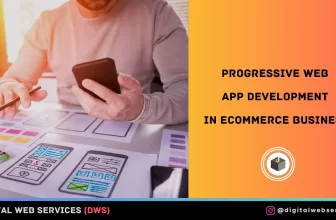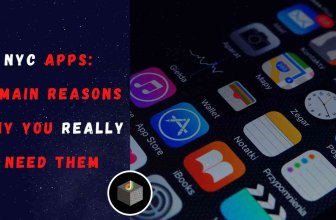
Did you know that most modern and valuable online websites are indeed web apps? Unlike websites, web apps are interactive. While the web app is accessed through a browser and runs on a web server, users can interact with the content. This allows the development team to capture valuable information, mainly useful or businesses. The information can help you to tailor effective marketing strategies, improve products, and services delivery, to mention a few critical aspects. With a scalable web app, you can supercharge your operations, making it easier to gain and maintain a competitive edge. But, what does the development process entail? What do you need to know to facilitate a successful web app development process? Here is everything you need to know to get started.
The Type
What type of web app best matches your operations? With the many options, your web app development quests must first consider your needs and goals to ensure you go with the best option. The top types of web apps include;
- Dynamic
- Ecommerce
- Content management system
- Static
- Single/multi-page
- Progressive web apps
Each option has its pro and cons, emphasizing the need to weigh your goals as you select the best match.
The technology
With the web app type in mind, you can consider the best technology to facilitate a smooth development process. Would the react-native backend be the best, and why? Selecting the frontend and backend technologies requires significant consideration. This involves weighing what counts the most in your app. For instance, consider customization options, third-party integration ease, response time, cost, and support community, among other features that your app type needs. The top technologies are React, Angular, Flutter, and Vue.js for the frontend. Popular backend technologies include Java, Python, Node.js, and .Net.
Development process
Following a proper web app development process is critical as you work to get the most out of the app. The process involves steps as highlighted below;
Establish the problem
What does the web app target to solve? Defining the problem and how the app intends to solve it is the foundation stone. You can’t invest in a web app just because others are doing it; you need an intuitive solution that’ll deliver the value of your investment.
Define the workflow
A technical and business-oriented workflow is essential. You’ll factor in what the web app consists of and how you intend to facilitate the development. Create wireframes detailing the essentials of the web app development process, including a timeline, frameworks, tools, resources, among others.
Build and test a prototype
Building an incomplete but functional app gives you an idea of what to expect from the final product. By developing a minimum viable product (MVP), you can establish if the process is running as expected and implement necessary changes. Test the MVP, validating its effectiveness to meet your goals. If it marks all the boxes, proceed to build the web app.
After building the web app, the process isn’t over. Further tests are necessary, ensuring that the web app is free from bugs. From there, you can host and launch the app and start to enjoy its many contributions.
Digital Web Services (DWS) is a leading IT company specializing in Software Development, Web Application Development, Website Designing, and Digital Marketing. Here are providing all kinds of services and solutions for the digital transformation of any business and website.










